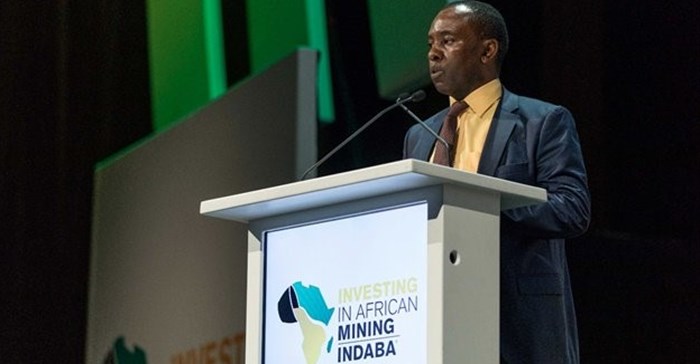He pointed out that mining continues to be a pillar of growth in South Africa, and contributes about 8% directly to South Africa’s gross domestic product and just under 460,000 direct jobs, with an estimated $2,5-3 trillion in non-energy mineral reserves still in-situ.
Commodity prices
Referring back to his speech at last year’s conference, where he commented on the cyclical nature of mining and the winter season in which the sector found itself, the minister said: “There are now signs that we are entering a new spring.
“A new balance is emerging in the demand and supply for mineral resources. There has been a remarkable recovery of prices during the latter part of 2016, more particularly with commodities such as coal, iron, ferromanganese and zinc.”
MPRDA and the Mining Charter
He went on to discuss the impending amendments to the Mineral and Petroleum Resources Development Act (MPRDA) and the revised Mining Charter.
In the case of the MPRDA, Zwane said the process is well underway and public hearings are taking place towards the finalisation of the Bill. “We expect it to be concluded by June 2017.”
On the revised Mining Charter, he said there had been extensive consultation with stakeholders and the final version will be gazetted next month. “(It) will be reflective of the views of stakeholders, in the interests of South Africa and provide for investor certainty.”
Ease of doing business
The investment one-stop shop, overseen by an inter-ministerial committee, works to improve regulatory efficiency by providing multiple services from a single point, providing advice and addressing any blockages identified for those interested in conducting business in the country.
“We have also established an integrated plan for economic growth and development, the nine-point plan which looks at cross-cutting issues such as infrastructure development, research, development and innovation as well as sectoral plans including mining and mineral beneficiation,” the minister said.
Beneficiation
Adding value to South Africa’s raw minerals remains a priority, and Zwane said the government has developed a programme for special economic zones, offering tax and investment incentives as well as bulk infrastructure to support the growth of mineral beneficiators.
Junior miners
“We are of the firm view that a new era of junior to mid-tier sized mines is upon us. We further believe that most job opportunities lie with small to medium companies, hence in 2017 we will be focusing on the promotion of investment, with a special focus on junior miners. We will continue to give them the support to enable them to thrive,” he said.
Health and safety
Raising the spectre of the Lily mine disaster last year, Zwane said his department “will continue to enforce the (health and safety) legislation consistently, and I have full confidence in the officials who administer these laws”.
He said that for mining to be sustainable, the safety of miners was an imperative and he called on the industry to continue its commitment to zero harm. “We want to commend all the mining companies who have achieved the laudable milestone of operating for more than 12 months without any fatality during 2016.”
Illegal mining
“The government will continue to collaborate with stakeholders in implementing the appropriate measures which will eradicate the illegal operations,” the minister said.
This is closely linked to Illicit financial flows from the mining sector. “Financial tools employed to avoid taxes and the fair share of mineral rents to the host governments only act to undermine the trust between stakeholders, and make for long term fragility of investments and the sector in South Africa, on the continent and globally.
“Let us work together to change the legacy of our sector and ensure that it is seen by all as a valued partner in development,” Zwane concluded.
The Investing in African Mining Indaba takes place at the Cape Town International Conference Centre from 6-9 February 2017.


































